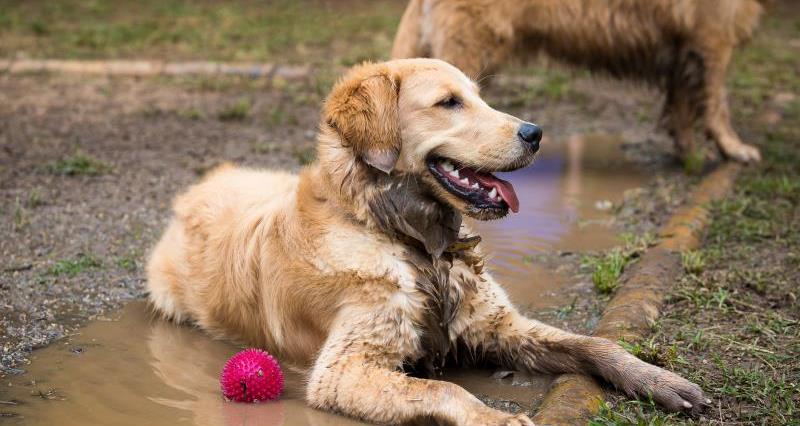The disease, which can often be fatal for our four-legged friends, causes the dog to vomit and develop lesions on the skin and occasionally the mouth and displays in the shape of bites or sores. Sadly the number of cases of Alabama rot is on the up, with 29 cases having been confirmed already this year.
Vets have urged pet owners to thoroughly clean their pets after walking in mud amid fears the disease could be contracted from it.
Official advice from the Dogs Trust said: “Where possible, stick to dry paths and keep dogs out of muddy or wet areas. Wash off any mud after your walk so you can check for lesions or wounds and if you spot any, go to your vet.”
Here’s how to spot the condition and steps you can take to prevent it:
Symptoms your dog may display
- The first symptoms are unexplained skin lesions, ulcers or sores that appear on the legs, body, mouth or tongue. Be sure to investigate any areas that your dog is excessively licking – it might not be clear that the problem is underneath your dog’s fur.
- Dogs that have contracted the disease will become lethargic.
- Your dog is likely to lose its appetite and not want to eat.
- Another sign of Alabama rot is unexplained vomiting.
Preventative measures
- When out walking, where possible stick to dry paths and keep your dog out of muddy or wet areas. Vets say the bug multiplies in wet, warm weather because it collects in pools of water, especially in boggy woodland areas.
- Wash any mud off your dog after walks.
- Check your furry friend for lesions or wounds and pay attention to excessive licking of the skin. If you see any, take your dog to the vet, especially if they don’t seem to healing.
- If your dog becomes unwell or suddenly suffers from conditions such as lethargy, loss of appetite and begins to vomit, take them to the vet immediately.
Looking for other dog-related articles?
